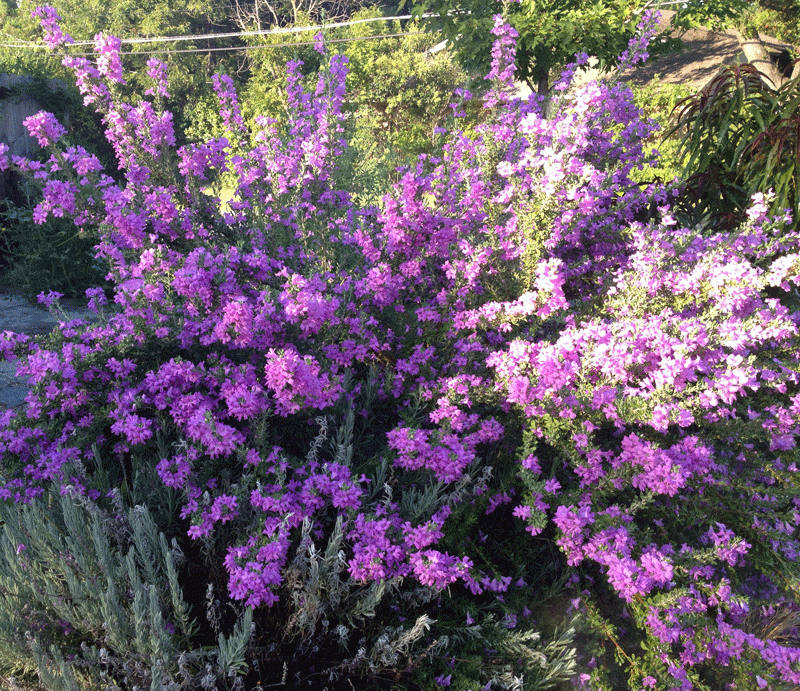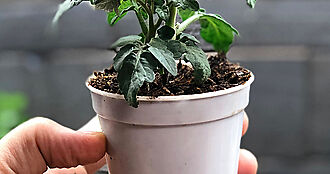Texas Sage
Texas Sage, Leucophyllum
This beautiful and easy-care shrub is a staple in Texas gardens all around the state. Prior to and after rainfall, Texas sage burst into bloom throughout the growing season, filling the landscape with color and food for bees and butterflies.

Growing
Native to northern Mexico through Texas and into New Mexico, this tough shrub can be grown successfully with little care. It can thrive in a variety of soil conditions and once established is extremely heat and drought tolerant. However, it’s best to provide soil that is well-drained and do not over-water. Be sure to plant in a full sun location, as plants that receive shade get thin and leggy. It can be planted in areas without irrigation or that receive little to no regular maintenance. There are little to no disease or pest problems associated with Texas sage other than cotton root rot in soils that do not drain properly.
Tips
Use Texas sage in low-maintenance landscapes to provide foliage contrast and bloom color. Plants can be sheared, however, they perform best when left to grow into their natural round and oval shapes. Regular shearing will deprive you of regular blooming. Plants may require winter protection in the coldest parts of the state.
Recommended
L. frutescens; there are many varieties of this species available and all are excellent performers in Texas. ‘Silverado’, ‘Desperado’, ‘Heavenly Cloud’ and ‘Green Cloud’ are especially favored.
L. candidum ‘Thunder Cloud’ offers up deep purple flowers.
L. langmaniae ‘Rio Bravo’ is a prolific bloomer with a wider growth habit.
Features: Silver foliage and blooms in white, pink, lavender, violet and variations of these colors.
Height: 5’-8’
Spread: 4’-6’
Hardiness: zones 8-10



